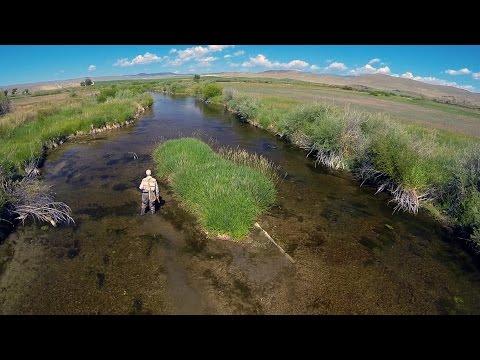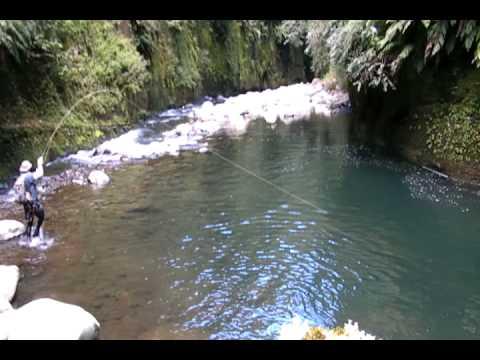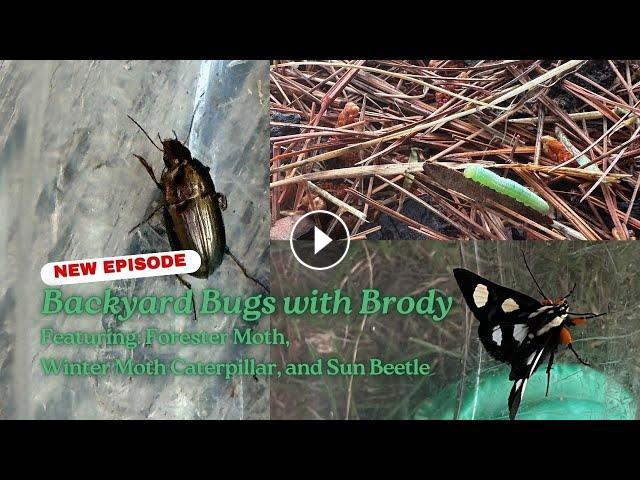In this episode of Backyard Bugs with Brody, Brody goes camping at Lake Jacomo in Blue Springs, Missouri and finds many different insects and animals.
Lake Jacomo is a 970-acre lake located in Flemming Park (7,809 acres). The park and lake feature numerous recreational features includes two marinas, campgrounds, boat rentals, fishing, picnic shelters. The park is home to a wide range of wildlife including deer, coyotes, raccoons, and turtles. The park also features a reserve with bison and elk. The lake is a popular fishing spot for crappie, bluegill, bass, carp, catfish, and walleye.
The first insect Brody found while camping was an eight-spotted forester (Alypia octomaculata). These butterfly-like moths fly during the day, drink from flowers, and even have antennae that are thickened at the tips. The forewings have two pale yellow spots, and the hindwings have two white spots. The black and white pattern creates a flickering effect like a strobe light. The front and middle pairs of legs have patches of bright orange hairs.
The moths are found in wooded areas that border open fields, typically flying during the daytime. The wooded areas have grapevines and Virginia creepers which the adults lay their eggs, and the larvae eat. The open fields have flowers the adults drink from.
The species has two broods per year. The second brood overwinters in the pupal stage. Larvae are whitish lavender, with each segment having several narrow, black transverse lines and one wide orange band. There are small black tubercles on the body, and white spots in the abdominal area. The head is orange.
Brody also found the caterpillar of a Winter Moth. (Operophtera brumata) This invasive insect was introduced to North America from Europe in the 1930s. It is one of the few moth species that is active as an adult in the winter months, flying from October to January. The moths are able to cope with freezing temperatures.
Males and females look different. Females have short wings and do not fly. They crawl up a tree trunk and release pheromones to attract males. Eggs are laid on twigs or in tree bark. The pale green caterpillars hatch in the spring as the buds are opening and then feed on the foliage. They can also ‘balloon’ from tree to tree by spinning a silk thread and using the breeze to carry them along to the next food source. In early June the caterpillars fall to the ground to pupate.
Finally, Brody found a common sun beetle. (Amara aenea) The invasive insect originated in Eurasia but is now found across North America. It is usually found running in the open during sunny days and is recognizable by its metallic look and flattish eyes.
If you are new to the channel, Brody is fascinated by bugs and animals. At first, he would watch wildlife documentaries and YouTube videos. Then he started going outside and exploring to see what he could find. It didn't take long before he started finding some interesting creatures in our own backyard. He loved sharing his discoveries with his brother, sister, and friends so much that we started this channel. This way he can show them videos and not just describe the bug or animal.
Hypnosis by Vendredi / vendrediduo
Creative Commons — Attribution 3.0 Unported — CC BY 3.0
Free Download / Stream: https://bit.ly/3ejmYOC
Music promoted by Audio Library • Hypnosis – Vendredi (No Copyright Music)
Lake Jacomo is a 970-acre lake located in Flemming Park (7,809 acres). The park and lake feature numerous recreational features includes two marinas, campgrounds, boat rentals, fishing, picnic shelters. The park is home to a wide range of wildlife including deer, coyotes, raccoons, and turtles. The park also features a reserve with bison and elk. The lake is a popular fishing spot for crappie, bluegill, bass, carp, catfish, and walleye.
The first insect Brody found while camping was an eight-spotted forester (Alypia octomaculata). These butterfly-like moths fly during the day, drink from flowers, and even have antennae that are thickened at the tips. The forewings have two pale yellow spots, and the hindwings have two white spots. The black and white pattern creates a flickering effect like a strobe light. The front and middle pairs of legs have patches of bright orange hairs.
The moths are found in wooded areas that border open fields, typically flying during the daytime. The wooded areas have grapevines and Virginia creepers which the adults lay their eggs, and the larvae eat. The open fields have flowers the adults drink from.
The species has two broods per year. The second brood overwinters in the pupal stage. Larvae are whitish lavender, with each segment having several narrow, black transverse lines and one wide orange band. There are small black tubercles on the body, and white spots in the abdominal area. The head is orange.
Brody also found the caterpillar of a Winter Moth. (Operophtera brumata) This invasive insect was introduced to North America from Europe in the 1930s. It is one of the few moth species that is active as an adult in the winter months, flying from October to January. The moths are able to cope with freezing temperatures.
Males and females look different. Females have short wings and do not fly. They crawl up a tree trunk and release pheromones to attract males. Eggs are laid on twigs or in tree bark. The pale green caterpillars hatch in the spring as the buds are opening and then feed on the foliage. They can also ‘balloon’ from tree to tree by spinning a silk thread and using the breeze to carry them along to the next food source. In early June the caterpillars fall to the ground to pupate.
Finally, Brody found a common sun beetle. (Amara aenea) The invasive insect originated in Eurasia but is now found across North America. It is usually found running in the open during sunny days and is recognizable by its metallic look and flattish eyes.
If you are new to the channel, Brody is fascinated by bugs and animals. At first, he would watch wildlife documentaries and YouTube videos. Then he started going outside and exploring to see what he could find. It didn't take long before he started finding some interesting creatures in our own backyard. He loved sharing his discoveries with his brother, sister, and friends so much that we started this channel. This way he can show them videos and not just describe the bug or animal.
Hypnosis by Vendredi / vendrediduo
Creative Commons — Attribution 3.0 Unported — CC BY 3.0
Free Download / Stream: https://bit.ly/3ejmYOC
Music promoted by Audio Library • Hypnosis – Vendredi (No Copyright Music)
- Category
- Fly Fishing
- Tags
- Backyard Bugs with Brody, Winter Moth, Eight Spotted Forester Moth




